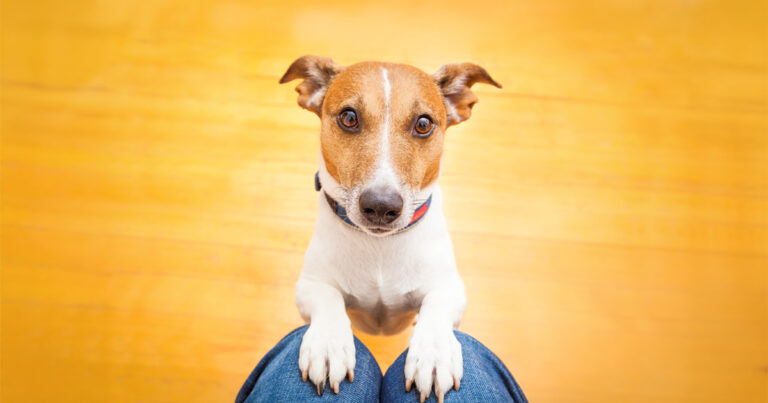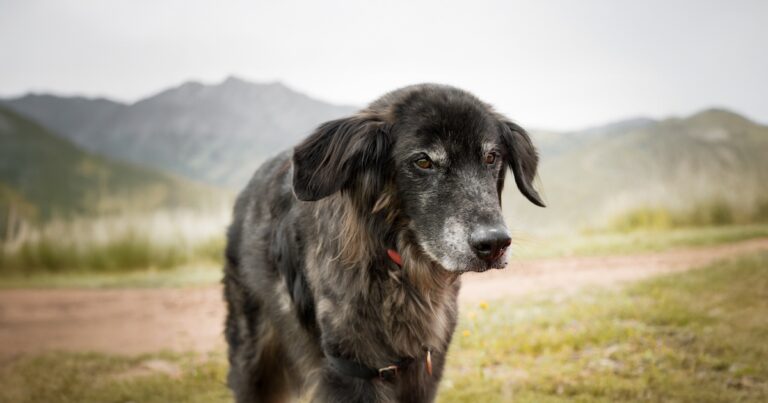Welcome to our series “Canine Safety Central” that’s all about keeping your favorite dog safe. We’ll explore a variety of situations throughout the series and provide tips on how to help keep your dog and everyone around them safe and healthy. In this post, we talk about how to help dogs and kids interact safely.
“Can we get a puppy? Pleeease!” Most parents will probably hear that question (persistently) at some point during their kid’s childhood, and if they don’t, it’s probably because they already have a dog in their family. Kids and dogs often grow up together as the best of pals, but sometimes it doesn’t start off that way. Some dogs love kids as soon as they meet them, but other dogs can be anxious or downright scared of those tiny humans that make loud noises and move unexpectedly.
Even if you don’t have kids, it’s important to train your dog on how to behave around them, because you may have family or friends with kids that come to visit, or you may encounter kids during a walk or at the dog park. Not all dogs will be BFFs with kids, but they should at least be trained to not react negatively toward them. If you do have kids, it’s just as important to teach them how to behave around dogs — particularly dogs they don’t know. Here are some tips on how dogs and kids should behave around each other.
Always Supervise Dogs and Young Children
One thing that dogs and kids have in common is their unpredictable nature. Even the most calm and laid-back dog can have a breaking point after one-too-many tail pulls during their nap. And while you may have repeatedly asked your kids to be kind and gentle to their furry friend (and they usually are), you might not have specifically said that they shouldn’t try to ride their dog like a horsey. Supervising interactions between dogs and kids makes sure that your dog is being treated well, and it keeps the kids safe by allowing you to watch for signs that your dog may be stressed or overwhelmed and needs a break.
Teach Kids How to Approach Dogs
It’s important that kids know that not every dog is as friendly as their canine BFF at home. Whether you’re a parent or a dog owner who may be approached by kids, here are some tips for teaching kids how to interact with dogs they don’t know. The tips apply to adults, too!
Always ask permission to approach or pet a dog you don’t know. It helps if you don’t maintain eye contact with the dog while you approach because they can see this as threatening. Keep your voice calm and at a normal volume. Let the dog approach you, and offer your hand for them to smell.
What if an aggressive dog approaches you? The best thing to do is stand still with your hands by your side and look down. Avoid eye contact with the dog and, if possible, put an object between you and the dog. If you’re already on the ground or you fall, curl into a ball with your fingers locked over your ears and the back of your neck and remain still. As hard as it might be to do, you should never run from an aggressive dog because they will chase you. Tell kids to go a different way if they see a stray dog ahead of them, so they can avoid a potential confrontation.
Let Sleeping, Chewing and Eating Dogs Lie
No one — adults or kids — should approach dogs that are eating, chewing on a toy or sleeping, especially if they have resource guarding issues. You also shouldn’t approach a dog you don’t know that is tied up or caged.
Your dog’s crate or sleeping area should be off-limits to kids. This is your dog’s personal space for relaxing and having quiet time — not a place to be used as a fort. If your dog’s sleeping or resting, make sure the kids know that the dog doesn’t want to play right now, so they should leave them alone.
Everyone Needs to Play Nice
Dog toys are for dogs and kid toys are for kids. Make sure both sides understand this. Kids shouldn’t take a toy away from a dog; they should let the dog bring it to them. And dogs should be taught to leave kid toys so that there are no tears because a favorite toy got chewed on. Keeping kids’ toys out of reach while they’re not in use will also help with this problem.
Kids need to learn not to pull a dog’s tail, ears, hair or any other body part. They should also be careful if they’re carrying the dog around. Some dogs may not appreciate being treated like a baby doll. Generally, kids roughhousing with the dog is not a good idea since this could quickly get out of hand — from either side.
Teach your dog basic commands and manners so they don’t jump up on kids and knock them over. “Leave it” is a useful command for dogs to know when they are playing with kids. Make sure you’re using lots of positive reinforcement during training, and ask if your kids want to help with training, too.
Know the Signs of a Stressed Dog
Your dog can’t tell you “I’ve had enough,” so it’s important that you read their body language to know when they need to take a break from any kind of interaction or situation, not just when they’re playing with kids. If your kids are old enough, you can also teach them some of the signs of stress in dogs that indicate playtime should be over.
Fearful dogs will yawn and lick their lips repeatedly, crouch near the ground, tuck their tails between their legs or roll on their backs to show submission. Aggressive dogs will stand tall and firm with their head held high and their hackles raised. They may bare their teeth and snap at the air.
Socialize, Socialize, Socialize
It’s one of the most important things your dog should do to lessen their chances of being scared or anxious about new experiences, including meeting tiny humans. The best time to socialize dogs is while they’re a puppy between 3 weeks and 4 months of age. But older dogs can be socialized too — you just need to go a bit slower with them. Our post “Why is my dog scared of people?” has some good tips for helping to introduce your dog to people. We also have some advice for introducing your baby to your pets.
Handling exercises can help your dog get used to being pulled and prodded a little. Start with gentle touches around their ears, holding their paws and tugging lightly on their tail, and reward them with lots of treats and praise. Getting used to being touched all over will also help when they go for a checkup at the veterinary clinic.
Any Dog Can Bite
Remember that any dog, regardless of their breed, age, size or usual temperament, has the potential to bite. And it’s not just dogs that are strangers to you that bite. According to The Family Dog, 77% of dog bites come from a family or friend’s dog. That’s why they started an online dog safety campaign for families called “Stop the 77.”
Kids and dogs can definitely be furever friends. You just need to take some precautions to make sure everyone stays safe.
RELATED POST: Guest Column: The Importance of Getting Your Kids Involved at the Rescue Shelter







